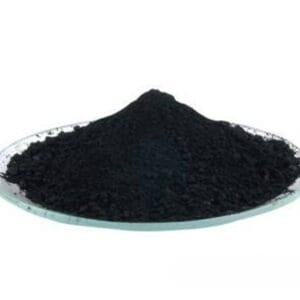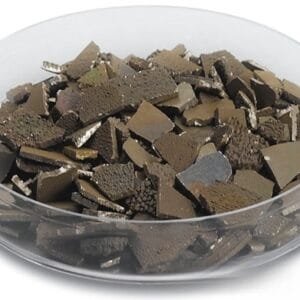Copper(II) Oxide Evaporation Materials Overview
Copper(II) oxide evaporation materials, with the chemical formula CuO, are integral to achieving superior film deposition quality. TFM specializes in manufacturing copper(II) oxide with exceptional purity, up to 99.9995%, ensuring reliable performance in various applications.
Product Specifications
| Material Type | Copper(II) Oxide |
| Form | Evaporation Materials |
| Symbol | CuO |
| Color/Appearance | Black to brown |
| Melting Point | 1,326 °C |
| Density | 6.315 g/cm3 |
| Purity | 99.5% ~ 99.99% |
| Shape | Powder/ Granule/ Custom-made |
Applications
Copper(II) oxide evaporation materials serve multiple purposes:
- Deposition Processes: Vital for semiconductor deposition, chemical vapor deposition (CVD), and physical vapor deposition (PVD).
- Optical Uses: Utilized in protective coatings, decorative finishes, and display technologies.
Packaging and Handling
Our copper(II) oxide materials are meticulously packaged with clear labeling to ensure easy identification and rigorous quality control. We take great care to prevent damage during storage and transportation.
Contact Us
TFM is a leading provider of high-purity copper(II) oxide evaporation materials, available in various forms including tablets, granules, rods, and wires. Custom shapes and quantities can also be accommodated. In addition to evaporation materials, we offer evaporation sources, boats, filaments, crucibles, heaters, and e-beam crucible liners. For up-to-date pricing and information on additional products, please contact us directly.
For further inquiries or to request a quote, please reach out to us.


 MSDS File
MSDS File



Reviews
There are no reviews yet.